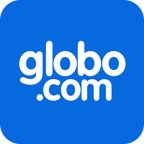
The New York Giants have just $1.6 million in salary cap space, the lowest amount in the league according to the NFLPA. That will surely change soon because $1.6 million isn’t nearly enough cap space to sign their draft class. The Giants will also need additional cap space down the road for in-season expenses, including the practice squad and injury replacements.
Advertisement
The Giants’ final three picks in this year’s draft — offensive lineman Marcus Mbow, tight end Thomas Fidone and cornerback Korie Black — signed their contracts during the team’s rookie minicamp on May 9. Those modest contracts won’t affect the Giants’ cap space immediately, since their cap hits fall below the team’s 51 most expensive contracts. Only the top 51 cap hits of the 90-man roster count on the cap during the offseason. That changes in Week 1, when all contracts count toward the cap (which is another expense the Giants must budget for).
The Giants will need cap space when they start signing their top picks. No. 3 pick Abdul Carter’s contract will carry an $8.2 million cap hit and No. 25 pick Jaxson Dart will have a $3.1 million cap hit.
Those signings could come at any time. Last year, first-round Malik Nabers signed during rookie minicamp. The Giants’ three first-round picks in the previous two years all signed their contracts in May. In fact, every Giants draft pick in the past two classes signed their contracts by the end of May.
There’s an obvious incentive for rookies to sign: The sooner they sign their contracts, the sooner they collect their signing bonuses. So expect Carter, Dart and the rest of the class to sign in the near future. That will prompt the Giants to create cap space.
General manager Joe Schoen has options to create space, but the most direct avenue is to restructure contracts. Outside linebacker Brian Burns sticks out as the most logical restructure candidate.
Burns has a $22.3 million base salary in 2025, which lends to creating a significant amount of cap space with a restructure. Assuming Schoen continues his practice of not adding void years, the Giants could create $15.7 million in cap space with a max restructure of Burns’ contract, which runs through 2028.
Advertisement
That would reduce Burns’ cap hit this year from $29.8 million to $14 million. The $15.7 million created this year would be pushed into the final three years of his contract, with new cap hits of $36 million in 2026, $37.7 million in 2027 and $37.7 million in 2028.
Schoen may not elect for a max restructure, but there’s no reason to leave any meat on the bone with Burns’ contract. Creating $15.7 million in cap space would give the Giants enough room to sign their draft class, with space left over for in-season expenses.
Expect word of a Burns restructure to coincide with the signing of Carter and other draft picks.
Other restructure candidates
Restructuring Burns will buy the Giants breathing room, but it’s unlikely that it will create enough cap space to get through the season. The other players with ample base salaries conducive to a restructuring are left tackle Andrew Thomas ($16.4 million) and nose tackle Dexter Lawrence ($15.5 million).
On the surface, Thomas is an obvious restructure candidate since his contract runs through 2029. A max restructure of Thomas’ contract would create $12.2 million in cap space this year, while pushing that amount into the final four years of the contract.
However, restructuring Thomas’ contract doesn’t figure to be a no-brainer for Schoen since he has been conservative about pushing money into the future for players with injury concerns. Thomas has missed 18 games over the past two seasons and is returning from a Lisfranc injury. Although Thomas is only 26, Schoen may have trepidations about shifting money into the future for a player with his injury history.
The guaranteed money in Thomas’ contract expires in 2026, and the team could move on with just $4.7 million in dead money after the 2026 season. Schoen may want to keep that option open if Thomas’ injury woes continue.
Advertisement
Even when Schoen restructured Thomas’ contract last summer — one major injury ago — the GM only pushed $3.3 million into future years. A more aggressive restructure last offseason could have moved up to $14.4 million into the future. It’s telling that Schoen was far more conservative with his restructure of Thomas’ deal, especially because a restructure of linebacker Bobby Okereke’s deal to create $4.5 million was necessary a month later.
So expect Schoen to leave Thomas’ contract alone unless there are no other appealing options to create cap relief. That leaves Lawrence as the most obvious secondary restructure candidate behind Burns.
The Giants could create $8.7 million in cap savings with a max restructure of Lawrence’s contract. That would result in $8.7 million being pushed into the final two years of Lawrence’s contract, resulting in cap hits of $31.3 million in 2026 and $33.3 million in 2027.
That appears like an obvious move if the cap space is needed, since the 27-year-old Lawrence remains at the top of his game. The only potential complication with restructuring Lawrence is that he could be seeking a raise, as the defensive tackle market has exploded since he signed a four-year, $90 million extension in the spring of 2023.
As with every veteran contract the Giants tender, the team has the right to restructure Lawrence’s contract at its discretion. But if Schoen doesn’t intend to enter negotiations on a raise with Lawrence, the GM may elect to avoid any contractual transactions.
Help now, hurt later?
There’s a future cost associated with the immediate savings created by any restructure. The Giants would lose $5.2 million in 2026 cap space with a max restructure of Burns this year.
The Giants are currently projected to have $28.2 million in cap space in 2026 by Over the Cap (OTC). That’s 14th most in the league and a benefit of having what they expect to be a starting quarterback in Dart on his rookie contract.
Advertisement
Restructuring Burns and other veterans would chisel away at that 2026 cap space. That’s why Schoen could also pursue cap savings with no future implications. Cutting players or getting them to take pay cuts would result in cap savings this year without dipping into future cap space.
Kicker Graham Gano and defensive tackle Rakeem Nunez-Roches stood out as the top cap casualty candidates at the start of the offseason. The Giants could have cut Gano, who is signed through 2026, at the start of the offseason for $3.2 million in cap savings with a $2.5 million dead money charge.
Cutting Gano seemed like a distinct possibility since the 38-year-old has struggled with injuries and performance the past two seasons. But the Giants haven’t added any kicking competition this offseason, so it appears they’re content to stick with Gano.
Cutting Nunez-Roches would create $3.6 million in cap savings while leaving a $1.4 million dead money charge. That seemed like an obvious move before the Giants signed veterans Roy Robertson-Harris and Jeremiah Ledbetter, and drafted Darius Alexander in the third round.
Nunez-Roches, who turns 32 in July, is in the final year of his contract. The Giants value his leadership, but a $5 million cap charge for a rotational defensive tackle seems excessive considering the Giants’ tight cap situation. Nunez-Roches could land on the chopping block — or at least in position for a pay cut — if the cheaper defensive line options perform well in training camp.
Schoen has made a habit of squeezing players who earned proven performance escalators for pay cuts around cut day. Slayton took such a pay cut in 2022; cornerback Darnay Holmes did the same in 2023.
There are three potential candidates in that category this year: Cornerback Cor’Dale Flott, tight end Daniel Bellinger and linebacker Micah McFadden. As Day 3 picks in the 2022 draft who played at least 35 percent of the Giants’ snaps in their first three seasons, all of those players earned a raise in their base salary from $1.1 million to $3.4 million.
Advertisement
The way for those players to avoid a pay cut is to seize a valuable role. That’s how cornerback Nick McCloud staved off a pay cut until midseason last year.
McFadden is best positioned after starting 28 games over the past two seasons, although he figures to have competition for his role from cheaper options Darius Muasau and Dyontae Johnson. The Giants also signed veteran linebacker/special teamer Chris Board to a two-year, $5.7 million contract this offseason.
The signing of Paulson Adebo will bump Flott out of the starting lineup, but the 2022 third-round pick still projects as the top backup corner. He’ll need to maintain that status to avoid a potential pay cut.
Bellinger is in the most perilous position. Theo Johnson took over as the No. 1 tight end as a rookie last season, while the Giants re-signed Chris Manhertz, who has a clear role as the team’s top blocking tight end. That leaves Bellinger as the No. 3 tight end. While he has value in that role, it wouldn’t be a surprise to see Schoen squeeze Bellinger for a pay cut to pick up $2.3 million in cap space before the start of the season.
Dead weight
A note on the cost of the Giants’ quarterback room. It’s been celebrated that the Giants are only paying Russell Wilson and Jameis Winston a combined $14 million on the cap this year. Even when Dart’s $3.1 million cap hit is added, it’s an affordable group. But the picture changes when the $22.2 million dead money charge from Daniel Jones’ contract is included.
The Giants will finally be free from the Jones albatross next year, with Wilson’s one-year, $10.5 million contract also off the books. That will leave them with just $8.9 million committed to Dart and Winston at quarterback in 2026.
Eye on the future
The Giants structured their free agent contracts this offseason with that cheap 2026 quarterback room in mind. It’s commonplace for lucrative contracts to have lower cap hits in the first year that increase in future years. What’s unique about the Giants’ structure this year is that Adebo and wide receiver Darius Slayton each have bigger cap hits in Year 2 than Year 3 in their three-year contracts.
Advertisement
Adebo’s three-year, $54 million contract has cap hits of $11.7 million in 2025, $23 million in 2026 and $19 million in 2027. Slayton’s three-year, $36 million contract has cap hits of $7 million in 2025, $16 million in 2026 and $13 million in 2027.
It’s not a major departure from the Giants’ typical structure, but it sticks out, and it fits with the cheap quarterback room they’re expected to deploy in 2026.
Big spenders
As usual, the Giants were among the biggest spenders in the NFL this offseason. The Giants dished out over $224 million in free agency this offseason, according to OTC. That was the fourth-most in the league.
The Giants also ranked fourth in free agent spending in 2024 at $206 million, according to OTC. They dished out an astronomical $422 million in contracts during the 2023 offseason.
(Photo of Micah McFadden and Brian Burns: Nic Antaya / Getty Images)
This news was originally published on this post .






Be the first to leave a comment